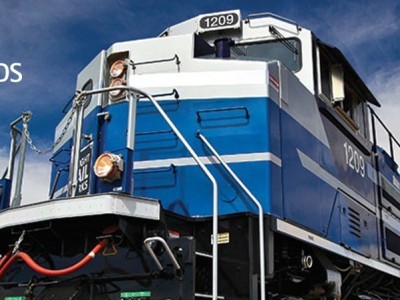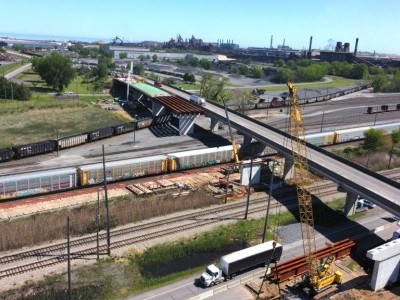ITS Logistics November Port Rail Ramp Index: Container traffic entering the West Coast and current Vancouver strike add strain to the U.S. supply chain
ITS Logistics today released the November forecast for the ITS Logistics US Port/Rail Ramp Freight Index. This month, changes in the index reflect the temporary agreement made between terminal operators and union officials to reopen port operations on the U.S. East and Gulf Coasts. Ocean container rail traffic off the U.S. West Coast also continues to be problematic as the rail infrastructure cannot keep up with additional volumes coming into Seattle and Los Angeles (LA).
“Container traffic entering the West Coast is still challenged today and experiencing volumes booked to avoid the Red Sea issues and East/Gulf labor union activity, which continues to test capacity in those markets,” said Paul Brashier, Vice President of Global Supply Chain for ITS Logistics. “This, coupled with the recent strike in Vancouver, will challenge U.S. West Coast operations as shippers find safe harbor here. This should continue into December.”
As reflected in the data, U.S. East and Gulf port demand increased drastically as operations reopened post-strike in October and have since moderated. Last month, thousands of dockworkers returned to work after reaching a tentative wage agreement between the United States Maritime Alliance (USMX) and the International Longshoremen’s Association (ILA). This ended one of the most extensive work stoppages in decades, and the two parties agreed to extend their current labor contract through January 15 to continue negotiations.
While ramp operations throughout the U.S. rail infrastructure are running smoothly, the additional dwell time at U.S. entry, coupled with earlier issues pertaining to getting capacity at origin in Asia, is forcing many companies to dray-off and transload. Companies are also prioritizing sending truck goods further east one-way into their supply chains, driving domestic truckload rates up out of the West Coast. This is all occurring as the nation prepares for the recently elected Trump Administration to come into effect.
“We now must focus attention to how potential tariffs proposed by the newly elected Trump Administration could impact supply chains, shipping costs, and overall trade dynamics in the months ahead,” continued Brashier. “In late 2018, tariffs implemented by the Trump Administration caused a significant amount of vessel and container diversions, congestion, and overall supply chain headwinds that, at the time, led to the most significant challenges ever to North American supply chains. Shippers moved billions of dollars in goods to get ahead of those tariffs.”
From that event, supply chain professionals learned that the inland portions of the container lifecycle mattered and drove the majority of costly, unplanned accessorial fees and costs. As a result, shippers determined that controlling their inland transportation, onboarding capacity with operations throughout North America, and having access to container visibility platforms were the keys to protecting their organizations from catastrophic inflated supply chain costs.
Over the next three months, ITS will keep a close eye on all updates leading up to the inauguration of the Trump Administration in January. Industry professionals can also expect many companies to start to ship ahead of more-than-certain executive actions regarding tariffs.
ITS Logistics offers a full suite of network transportation solutions across North America and distribution and fulfillment services to 95% of the U.S. population within two days. These services include drayage and intermodal in 22 coastal ports and 30 rail ramps, a full suite of asset and asset-lite transportation solutions, omnichannel distribution and fulfillment, LTL, and outbound small parcel.
The ITS Logistics US Port/Rail Ramp Freight Index forecasts port container and dray operations for the Pacific, Atlantic, and Gulf regions. Ocean and domestic container rail ramp operations are also highlighted in the index for both the West Inland and East Inland regions. Visit here for a full comprehensive copy of the index with expected forecasts for the US port and rail ramps.
Similar Stories

Port of Prince Rupert moved 23.1M tonnes of cargo in 2024 amid historic expansion phase
View Article
AAR Statement on the Inauguration of Donald J. Trump
View Article
Port of Long Beach’s Cordero hails ‘Green Port’ achievements
View Article
Steering the Ship, Jess Ramirez Sworn In as President of Oxnard Harbor District
View Article
Jeffersonville port delivers record road salt shipments to Greater Louisville area during recent winter storms
View ArticleNC Ports Notice: Holiday Schedule Notice Martin Luther King Jr. Day
The Port of Wilmington Container Gate (South Gate) and the Charlotte Inland Port (CIP) will operate on a reduced schedule on Monday, January 20: 8 AM-12 PM and 1 PM-5…
View ArticleGet the most up-to-date trending news!
SubscribeIndustry updates and weekly newsletter direct to your inbox!





